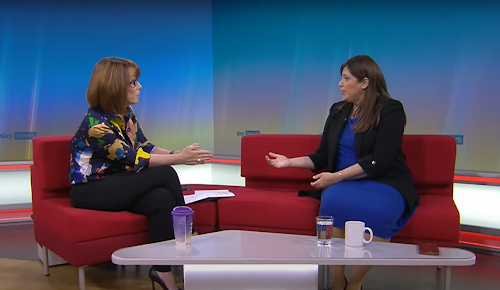The New York Times has a revealing report about the fawning treatment that Bashar and Asma al-Assad received from much of the Western media before the start of the Syrian uprising– including Vogue’s infamous “Rose in the Desert” profile of Mrs. Assad.
With the help of high-priced public relations advisers who had worked in the Clinton, Bush and Thatcher administrations, the president and his family have sought over the past five years to portray themselves in the Western media as accessible, progressive and even glamorous.
Magazines and online outlets have published complimentary features about the family, often focusing on fashion and celebrity. In March 2011, just as Mr. Assad and his security forces initiated a brutal crackdown on political opponents that has led to the death of an estimated 10,000 Syrians, Vogue magazine ran a flattering profile of the first lady, describing her as walking “a determined swath cut through space with a flash of red soles,” a reference to her Christian Louboutin heels.
Fawning treatment of world leaders — particularly attractive Western-educated ones — is nothing new. But the Assads have been especially determined to burnish their image, and hired experts to do so. The family paid the Washington public relations firm Brown Lloyd James $5,000 a month to act as a liaison between Vogue and the first lady, according to the firm.
…..
The campaign to make the ruling family the face of a more Westernized and open Syria began in 2006, when Mrs. Assad approached the public relations firm Bell Pottinger in London.Tim Bell, a co-founder of the firm and a former media adviser to Margaret Thatcher, said Mrs. Assad contacted the firm after several first ladies, including Laura Bush, began to hold annual meetings and conferences.
“She wanted to be a part of that club,” he said in a phone interview.
Bell Pottinger did not set up interviews for Mrs. Assad directly, but advised her on how to set up a communications office in Damascus to help shape her image.
A few years later, positive articles began to appear. Paris Match called Mrs. Assad an “element of light in a country full of shadow zones” and the “eastern Diana.” French Elle counted her among the best-dressed women in world politics, and in 2009, The Huffington Post published an article and fashion slide show titled “Asma al-Assad: Syria’s First Lady and All-Natural Beauty.”
My favorite quote is from Joan Juliet Buck, author of the Vogue piece: “[Mrs. Assad was] extremely thin and very well-dressed, and therefore qualified to be in Vogue.”
On Sunday, Anna Wintour, the editor of Vogue, issued a statement about the article saying, in part: “Like many at that time, we were hopeful that the Assad regime would be open to a more progressive society. Subsequent to our interview, as the terrible events of the past year and a half unfolded in Syria, it became clear that its priorities and values were completely at odds with those of Vogue. The escalating atrocities in Syria are unconscionable and we deplore the actions of the Assad regime in the strongest possible terms.”
At that time, the Assad regime had been in power for almost 11 years. If Ms. Wintour had been a regular reader of Harry’s Place, she would not have been so easily fooled.


